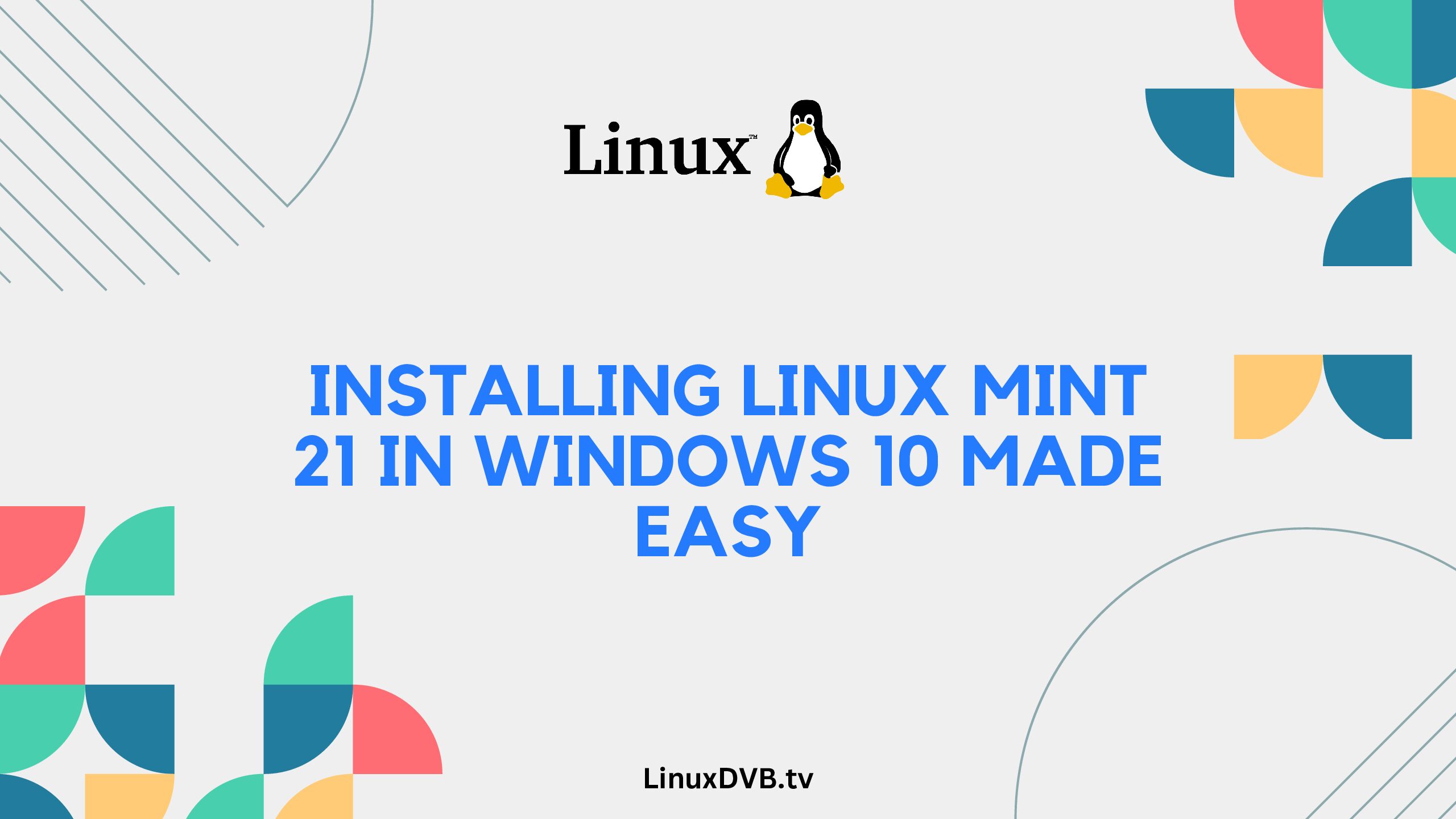Are you curious about how to install Linux Mint 21 in Windows 10? Look no further! This article will walk you through the process, providing you with a comprehensive guide to seamlessly integrate Linux Mint 21 alongside your Windows 10 operating system. Whether you’re a tech enthusiast or a newcomer to the world of operating systems, this guide is designed to make the installation process easy and hassle-free.
Table of Contents
How to Install Linux Mint 21 in Windows 10?
Installing Linux Mint 21 in Windows 10 is a straightforward process that can open up a world of possibilities for your computing experience. Follow these steps to get started:
- Backup Your Data: Before you begin any installation process, it’s crucial to back up your important data. While the installation is generally safe, having a backup ensures you don’t lose anything in the unlikely event of an issue.
- Create a Bootable USB Drive: To install Linux Mint 21, you’ll need a bootable USB drive with the installation files. You can create one using tools like Rufus or BalenaEtcher. Download the Linux Mint 21 ISO file from the official website.
- Access BIOS Settings: Restart your computer and access the BIOS settings by pressing the appropriate key (usually F2 or Delete) during startup. Configure the boot order to prioritize the USB drive.
- Start the Installation: Insert the bootable USB drive and restart your computer. Linux Mint’s installation wizard will guide you through the process. Choose the option to install Linux Mint alongside Windows 10.
- Allocate Disk Space: During the installation, you’ll be prompted to allocate disk space for Linux Mint. You can choose the amount of space you want to allocate or let the system do it automatically.
- Select Time Zone and Keyboard Layout: Follow the on-screen prompts to select your time zone and keyboard layout preferences.
- Create User Account: Set up your user account by providing your name, username, and password. This will be used to log in to Linux Mint.
- Wait for Installation to Complete: The installation process will take some time. Once it’s finished, you’ll receive a notification.
- Restart Your Computer: After the installation is complete, restart your computer. You’ll see a boot menu that allows you to choose between Windows 10 and Linux Mint 21.
- Explore Linux Mint 21: Congratulations! You’ve successfully installed Linux Mint 21 in Windows 10. Take some time to explore the features and functionalities of your new operating system.
Benefits of Using Linux Mint 21
Linux Mint 21 offers a range of benefits that can enhance your computing experience:
- User-Friendly Interface: Linux Mint is known for its intuitive and user-friendly interface, making it a great choice for both beginners and experienced users.
- Customization Options: Personalize your desktop and system settings to suit your preferences. Linux Mint offers various themes and customization options.
- Security: Linux is inherently more secure than some other operating systems. Linux Mint provides regular security updates to keep your system protected.
- Vast Software Repository: Access a wide range of free and open-source software through the built-in Software Manager.
- Stability: Linux Mint is built on top of Ubuntu, known for its stability and reliability. You can expect a smooth and consistent performance.
FAQs
Can I install Linux Mint 21 without affecting my Windows 10 data?
Yes, by choosing the option to install Linux Mint alongside Windows 10, your Windows data will remain unaffected.
What if I encounter issues during installation?
If you face any issues, refer to the official Linux Mint documentation or online forums for solutions. It’s also a good idea to double-check your hardware compatibility.
Can I switch between Linux Mint and Windows 10 after installation?
Absolutely! When you start your computer, you’ll see a boot menu that allows you to choose the operating system you want to use.
Is Linux Mint 21 completely free to use?
Yes, Linux Mint is an open-source operating system and is available for free. You can download, install, and use it without any cost.
Will I be able to run Windows software on Linux Mint?
While Linux Mint has many software options, Windows software doesn’t run natively. However, you can use compatibility layers like Wine to run some Windows applications.
Can I uninstall Linux Mint if I no longer need it?
Yes, you can uninstall Linux Mint without affecting your Windows installation. Simply use the Windows Disk Management tool to remove the Linux partitions.
How to install Windows on Linux Mint?
You cannot directly install Windows on Linux Mint; it requires a separate partition or virtual machine.
How to download Linux Mint on Windows 10?
Download the Linux Mint ISO file from the official website using a web browser in Windows 10.
How to install Linux alongside Windows 10?
During installation, choose the option to install Linux alongside Windows 10, which will create a dual-boot setup.
How to install Linux Mint 21 in Windows 10?
Use virtualization software like VirtualBox to create a virtual machine and install Linux Mint 21 on it in Windows 10.
How to install Linux Mint on Windows 10 PC?
Install Linux Mint on a separate partition or use virtualization software to run it as a virtual machine on your Windows 10 PC.
Conclusion
Congratulations on successfully installing Linux Mint 21 in Windows 10! By following this guide, you’ve taken a significant step toward exploring the world of Linux while retaining the familiarity of Windows. With its user-friendly interface, customization options, and enhanced security, Linux Mint 21 is a fantastic choice for anyone seeking a reliable and versatile operating system.
Remember, the journey doesn’t end here. Take the time to discover the features, applications, and possibilities that Linux Mint 21 has to offer. Embrace the power of open-source software and enjoy a computing experience that’s tailored to your needs.

